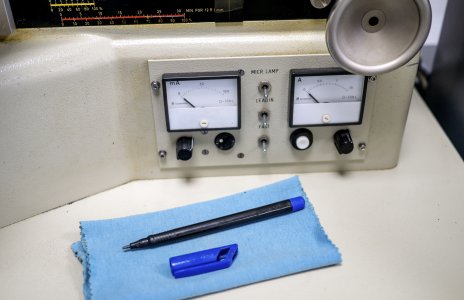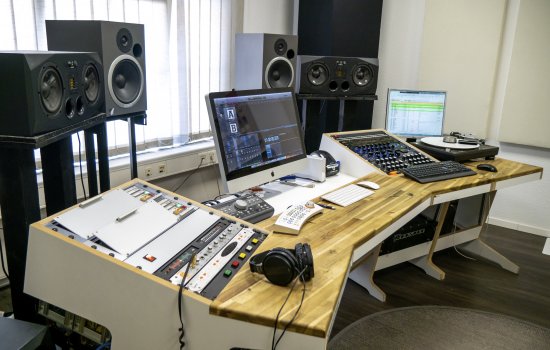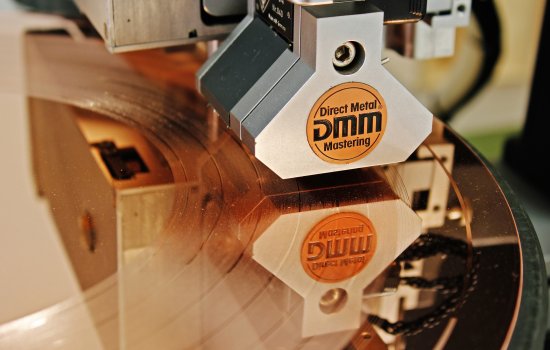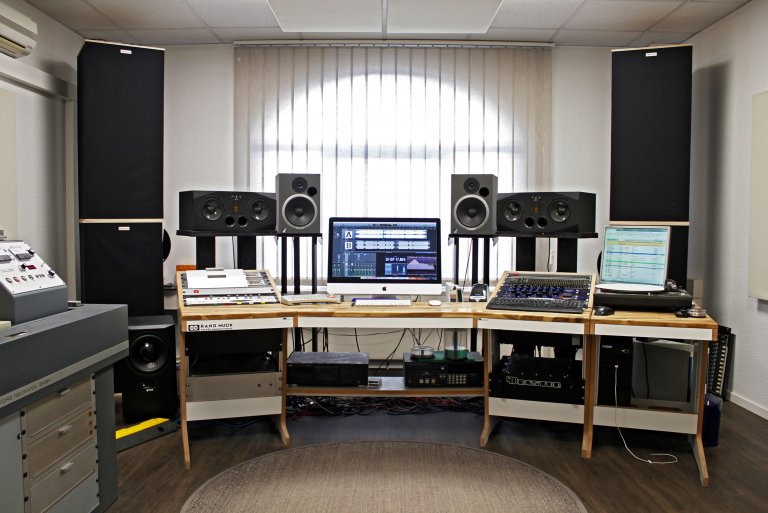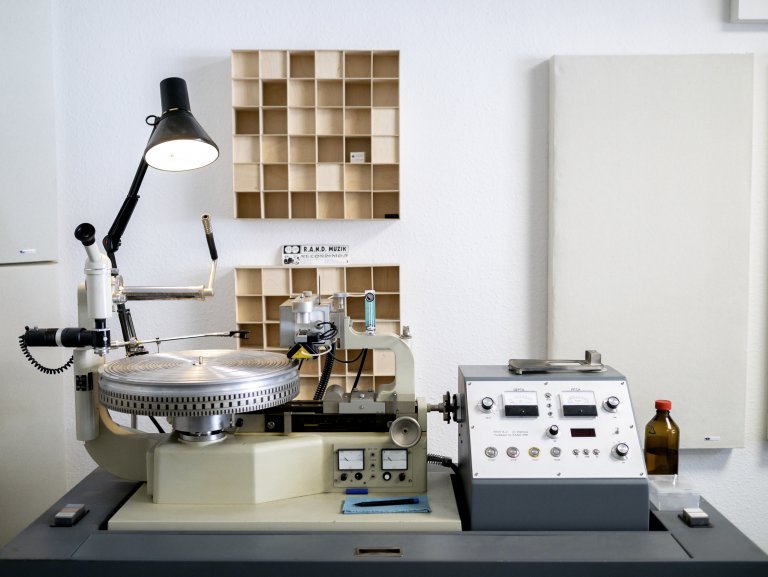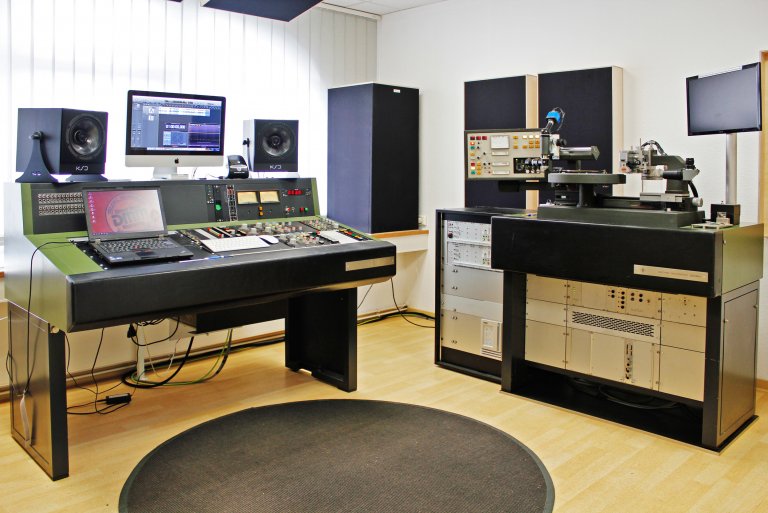From audio signal to physical copy
During cutting, the acoustic information is transmitted to the lacquer foil or copper blank via the cutting system. The cutting head contains a magnet and two coils - one for the left channel and one for the right channel. The audio signal is transmitted to the magnet, which moves through current flow. This movement is transmitted to the stylus, which is attached to the end of the cutting head which makes the movement visible and palpable in the form of a groove on the lacquer foil or copper blank.
The cut forms the template for the subsequent pressing. This means that a change in the audio material (e.g. the track sequence) is only possible with a new cut.
